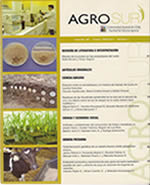Assessment of Sargassum (Sargassum spp.) as a component of agricultural substrates
Main Article Content
Abstract
Sargassum (Sargassum spp.) is a brown macroalga with anomalous arrivals on Caribbean beaches during the last decade, generating a problem for local tourism due to its unappealing look and smell when decomposing along the coast. To provide different management options, research studies have proposed incorporating it into different industrial processes ranging from cosmetics, construction and food production. The latter includes treatments leading to its physicochemical conditioning and subsequent use as an agricultural substrate, however, research on its performance is scarce. Therefore, this study aims to determine the physical and chemical characteristics of a sample of algae collected in Puerto Progreso, Yucatan, México, as well as their effect on the germination of two horticultural species. The results were compared with the characteristics and performance of peat (Peat moss®) and showed unfavourable physical properties when used as a single component, as well as high concentration of heavy metals, sodium and calcium ions that would limit its use in the food industry, in addition to negatively interfering with the germination stages. Therefore, it is suggested to test mixtures of sargassum with other materials that allow for improving its physical characteristics while buffering metal concentrations, in addition to devising mechanisms to reduce their concentration or completely eliminate them from the substrate.

